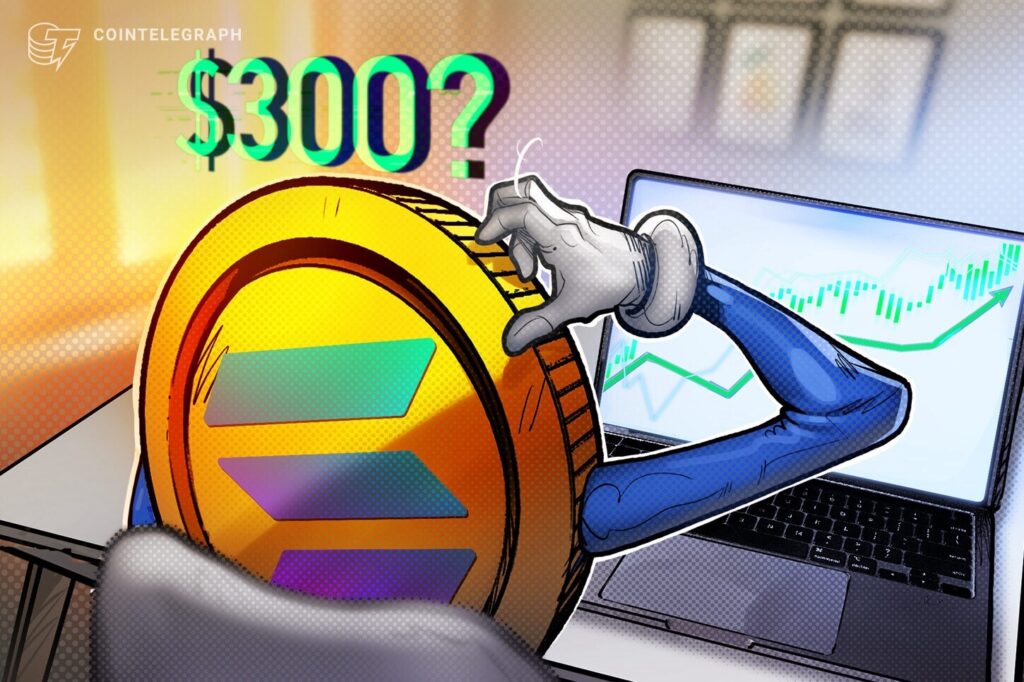30s Summary
Solana’s SOL token, after dipping to $222 on 26 November, has rebounded by 8%. Despite a minor increase of 1% between 20 and 27 November, the value of assets locked in Solana rose by 48% in the preceding 30 days. Solana’s focus on memecoins may, however, be risky in the long haul. Despite recent turbulence, futures are suggesting that traders maintain a positive outlook on SOL. Observing all data, it appears SOL’s price may continue to increase, with substantial room for SOL to catch up to Ethereum’s market cap.
Full Article
After dipping to $222 on Nov. 26, Solana’s SOL token has bumped up 8%. Even though some folks still aren’t totally sold on it – hell, it did drop from an all-time high of $263.80 – the buzz around town is that SOL’s still got plenty of gas in the tank.
Some of SOL’s supporters are a bit miffed, though. Between Nov. 20 and Nov. 27, it only went up by 1%, while the rest of the altcoin market was up 12%. While loads of tokens soared – Stellar, Celestia, Fantom, Uniswap, and Polkadot – all climbed by at least 40% during that same week.
But hey, it ain’t all bad news for SOL. The Solana network is solidifying its spot as the second-largest blockchain, judging by how many folks are using it and building on it. Not to mention, the value of stuff locked up in Solana shot up 48% in the 30 days leading up to Nov. 27.
For comparison, in the same timeframe, the BNB Chain saw deposits grow by 14%, and the Tron network grew by 13%. A few Solana success stories include Jito liquid staking at $3.4 billion (up 44%), Jupiter decentralized exchange at $2.4 billion (up 50%), and Raydium at $2.2 billion (up 58%). It’s all pointing to people wanting more SOL, especially with its broader DApp ecosystem taking off.
There’s a belief floating around that SOL and Ether are locking horns – but the numbers tell a different tale, showing that both can shine without stealing each other’s thunder. For example, onchain activity on Ethereum climbed by 47% in the last 30 days. Uniswap volumes on Ethereum rocketed 62% in that time, and CoW Swap volumes grew by a whopping 71%.
When it comes to launching and trading wacky tokens (or memecoins), Solana’s hot stuff right now. While Ethereum’s still the go-to place for DeFi opportunities. Interestingly, three of the top five highest-earning DApps belong to Solana – Raydium, Jito, and Pump.fun – which are raking in more dough than Ethereum’s big names Lido, Uniswap, and Aave.
However, Solana’s heavy focus on memecoins might be a bit of a gamble. The wild hype around tokens like BONK, POPCAT, MEW, and SPX6900 – which saw a massive surge of over 100% in three months – might not be sustainable in the long run.
In terms of SOL’s overall future, the futures premium is pretty useful. Specially, for getting a sense of whether traders’ attitudes towards SOL have changed after its 10% tumble between Nov. 23 and Nov. 27. In stable environments, futures for the coming month are usually 5% to 10% higher than spot prices due to settlement delay.
Right now, SOL futures are hinting that traders are willing to spend a 23% yearly premium to hold onto their long (buy) positions – the highest we’ve seen in seven months. This could be taken as a good sign, but it’s also raising eyebrows, that too much bullish sentiment might spur an above 40% metric, upping the chances for a sudden downfall if prices unexpectedly drop.
Weighing up all the data from the Solana network and the derivatives market, it looks like SOL’s price might continue to climb. Comparing Solana’s current market cap of $113.7 billion to Ethereum’s $429.4 billion, there’s plenty of room for SOL to catch up.

